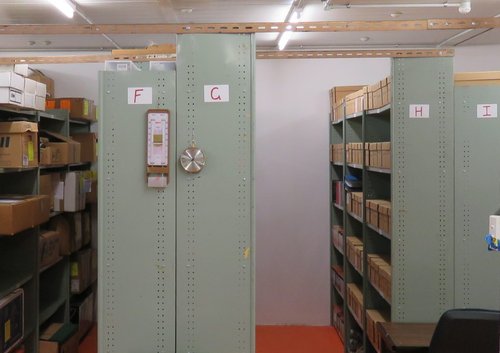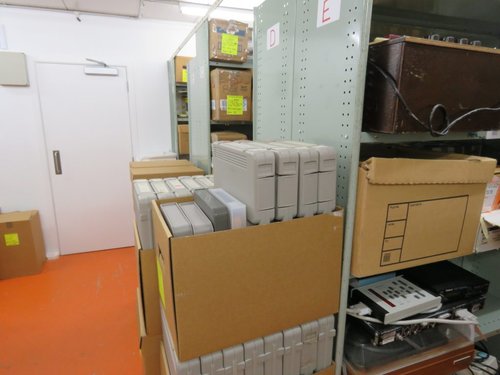
By David Klein
Boxes and boxes and boxes. Collecting is done by actively searching for items of significance and accepting deposits from members of the public under the guidance of our Selection and Acquisition Policy. With a constant influx of material, this can lead to a backlog: there’s simply more material than our staff have time to process as it arrives (although it is always safely stored until that can happen).
Ngā Taonga recently completed a project to review and accession the material in one of our vaults. ‘Accession’ could become your ‘Word of the Day’ – it basically means to bring the material in to a collection and provide some documentation to list in a catalogue. Think about when someone moves to a new town and their basic contact information is added to the phone book.
During the second half of last year, Dave King, Georgina Parker and Eleanor Otzen were tasked with working through the backlog in our TA3 vault. This is temperature controlled and has some items that live there permanently while others are incoming deposits awaiting accessioning. Once accessioned the material makes its way to permanent homes in other vaults.
Hero image: Archiving shelves at Ngā Taonga.
Selection and Acquisition Policy - 2017
Download Selection and Acquisition Policy - 2017 – PDF, 118.1 KB
Inside the TA3 vault at Ngā Taonga (Photo by David Klein).
So how does the accessioning process go? “You get as much info as you can from the object, enter it to the database and try to be quick and efficient. You want to provide a good foundation with things like format, the year it was made, who created it,” says Dave King. This is accessioning though, not cataloguing (a separate archival process) – it’s the basic info, rather than a scene by scene researched catalogue listing. “There’s a fine line with cataloguing. You want to get it done, and have enough info that people can find it in the catalogue. But at the same time, you don’t want to take all day for one item,” says Dave.
Even small amounts of information can be tricky to glean. Georgina Parker explains that “sometimes there’s a booklet with lots of info. ‘Aunty Mavis made the costumes…’ But often there’s nothing. Things can be labelled poorly or not at all – it can require quite some work to figure out what you have.”
Sometimes all three staff were working on the same deposit. From the reference library for the Human Rights Commission, there were around 140 VHS titles received of social and political interest. That collection is now physically housed together with titles linked in the Archive’s catalogue. All three staff were also required to work through the large amount of news recordings from the Chapman Collection.
Did they find anything interesting or unusual? Georgina enjoyed the content from the Moving Image Centre. “There were lots of homegrown short films – some of them were really good!”
“There were some cool little nuggets,” says Dave. “There was Chris Knox Super 8 footage and animations that were really great. And footage of Tony Fomison painting.”
All told, it was a successful project with 4,982 titles added to the database.